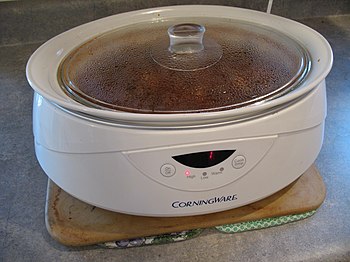 |
| Paella Español: paella (Photo credit: Wikipedia) |
In fact, paella is one of the most versatile dishes to make. Paella also has the advantage of being great to clean out the fridge and use up leftover meats and vegetables. Any combination will eventually be great the secret is in the chemistry. Spanish Paella is a dish that is generally made to feed several people. Moreover, Spanish Paella is quite flavorful the next day as the tastes have had time to mix together and become stronger.
Here are three basic steps to follow to make wonderful Spanish Paellas while leaving you the latitude to be creative and to make the dish their own by customizing it to their taste.
1. Preparing the rice.
Select a type of rice that you are comfortable using. Feel free to experiment but know that Spanish Paella contains a lot of ingredients and if you are unhappy with the end result with a particular type of rice, you might end up with a lot of waste. Basmati, brown, or a mix with wild rice can add great taste and texture. Follow the instructions on the package with regards to washing and cooking the rice. Finely chop some onion, garlic, and tomato. Heat a saucepan and add olive oil once the saucepan is hot (make sure that the oil does not start smoking. Burnt olive oil is carcinogenic and quite unhealthy). Once the oil is hot, throw in the uncooked rice. Frying uncooked rice gives it a nutty taste. Let the rice fry in the saucepan for a minute or so. Add the chopped onion, garlic, and tomato until they soften, mixing constantly. Spice with saffron, salt, and pepper. Feel free to experiment. Cumin, Cayenne various fine herbs, or even a bit cinnamon or cloves can easily be added for a flavoring of your own. This mixture should not be on the stove for more than three to five minutes. At high heat with constant mixing, none of the ingredients should stick but they should mix well together and soften. Once all the ingredients are combined, remove the saucepan from the burner and mix in some frozen peas. Add enough peas to make a well-balanced mixture.
2. Choosing and making meat.
In a frying pan at high heat, brown some pieces of chicken. Upper thighs, drumsticks, breasts...it's all good. Do not cook the meat completely but brown the outside. Once browned, set the meat aside. Lamb can also add great flavor to your Spanish Paella.
3. Combination of it all
Cover the bottom of the Spanish Paella pan with the uncooked rice mixture. Add the browned chicken pieces on top. Add uncooked shellfish and small fish filets rolled up and fastened with a toothpick or string. Use any type of fish but make sure that its flesh will hold well together. Pour some chicken broth on top (if the broth is warm the cooking time will reduce). Note that you can also add wine for more flavor. Cover the Spanish Paella dish and cook for about 45 minutes at 350 Fahrenheit or until the rice is fully cooked. At this point, you can add raw shrimp or muscles and cook uncovered for another five minutes.
In short, the secret to preparing the perfect Spanish Paella is to make it your own!






